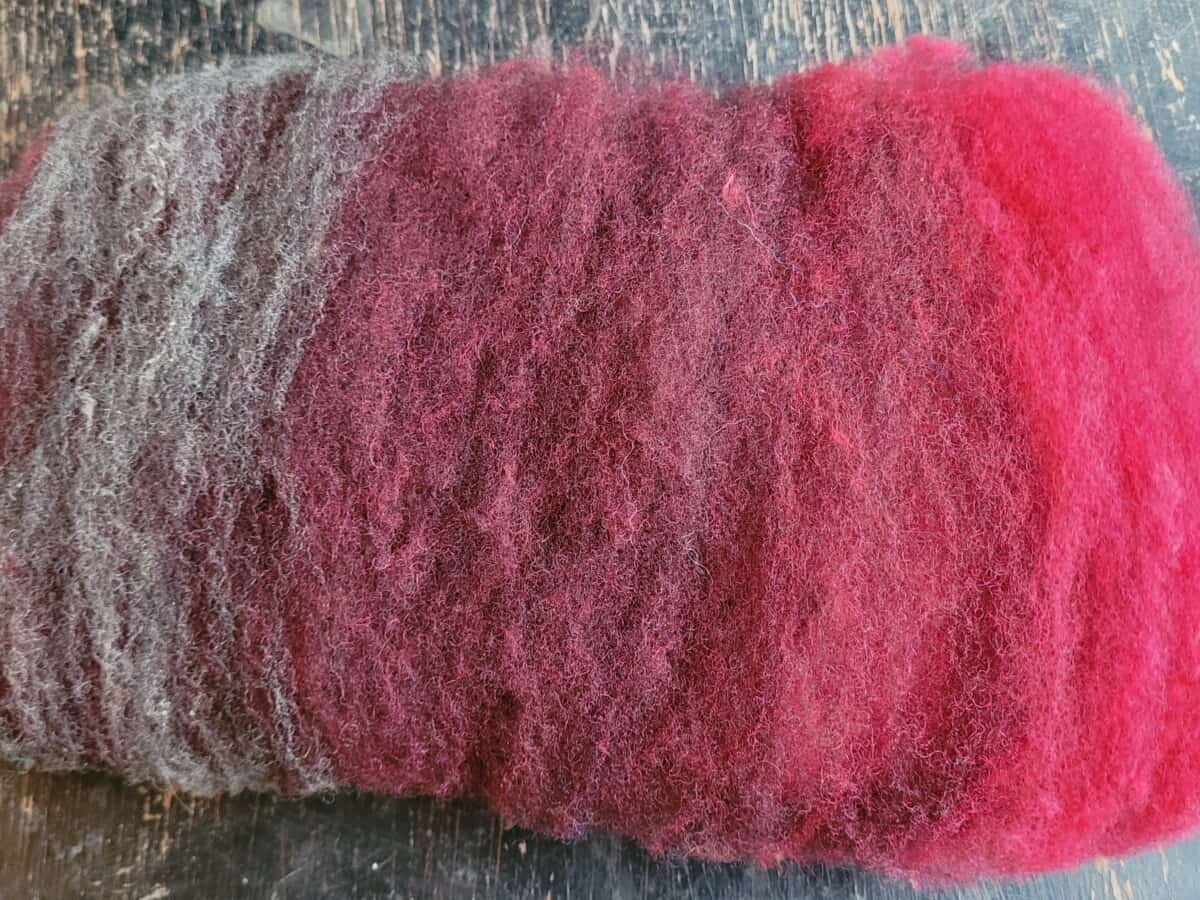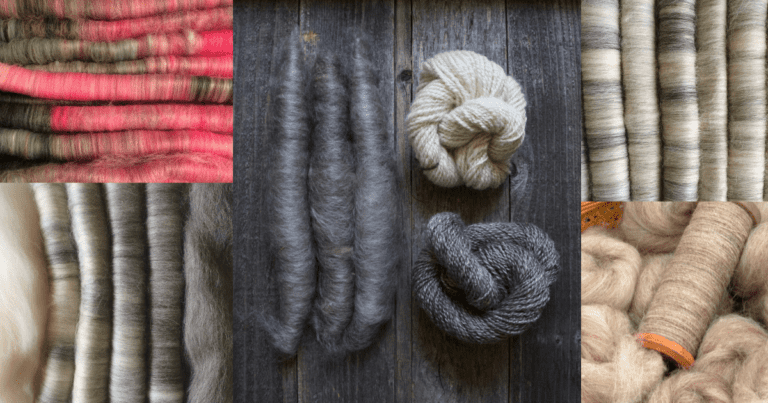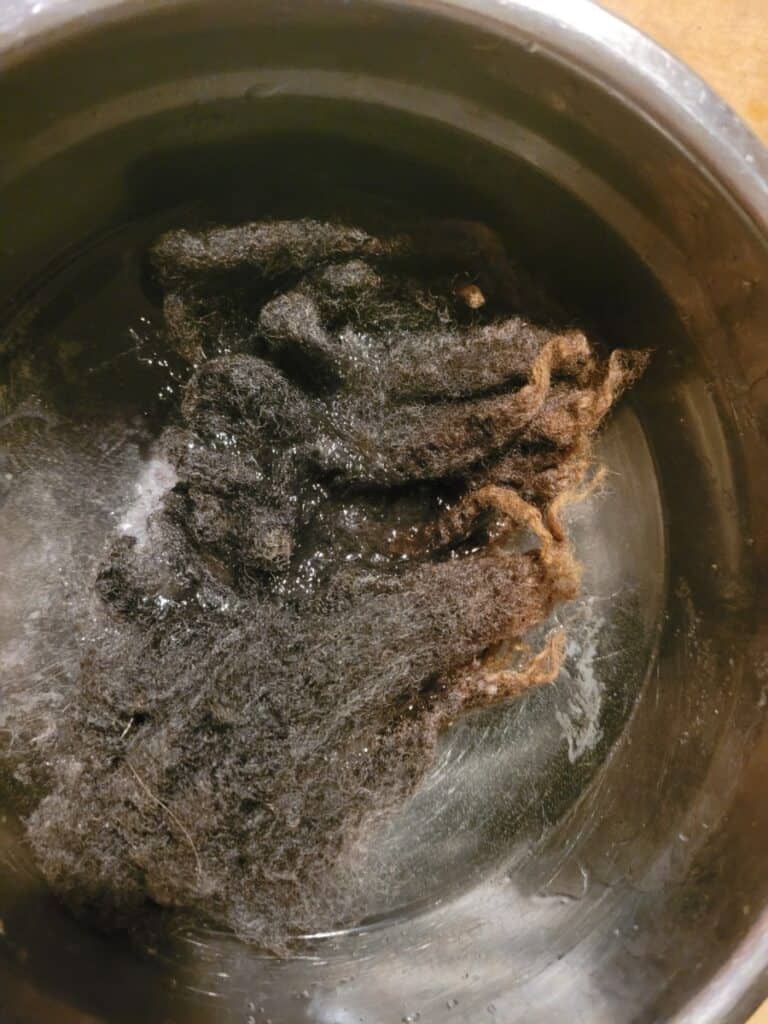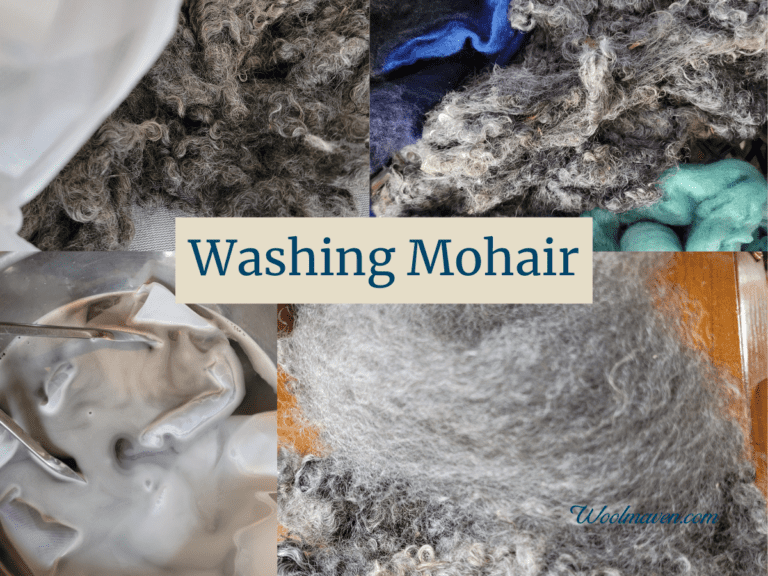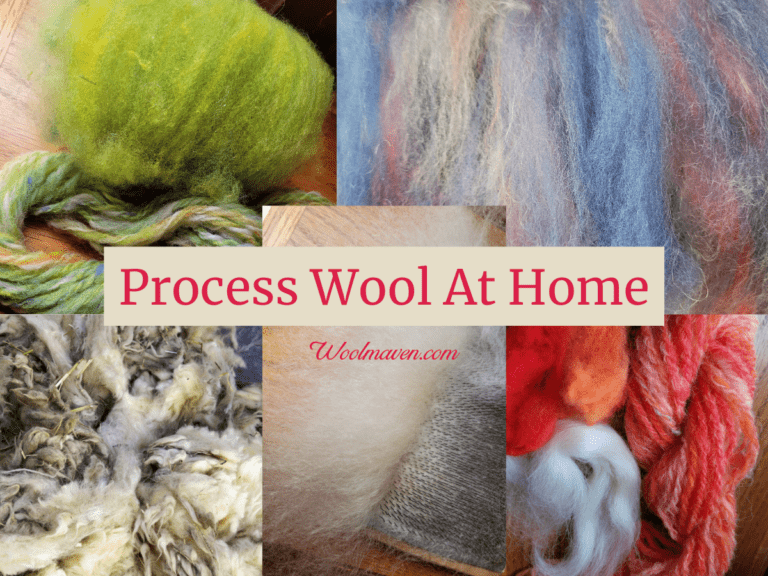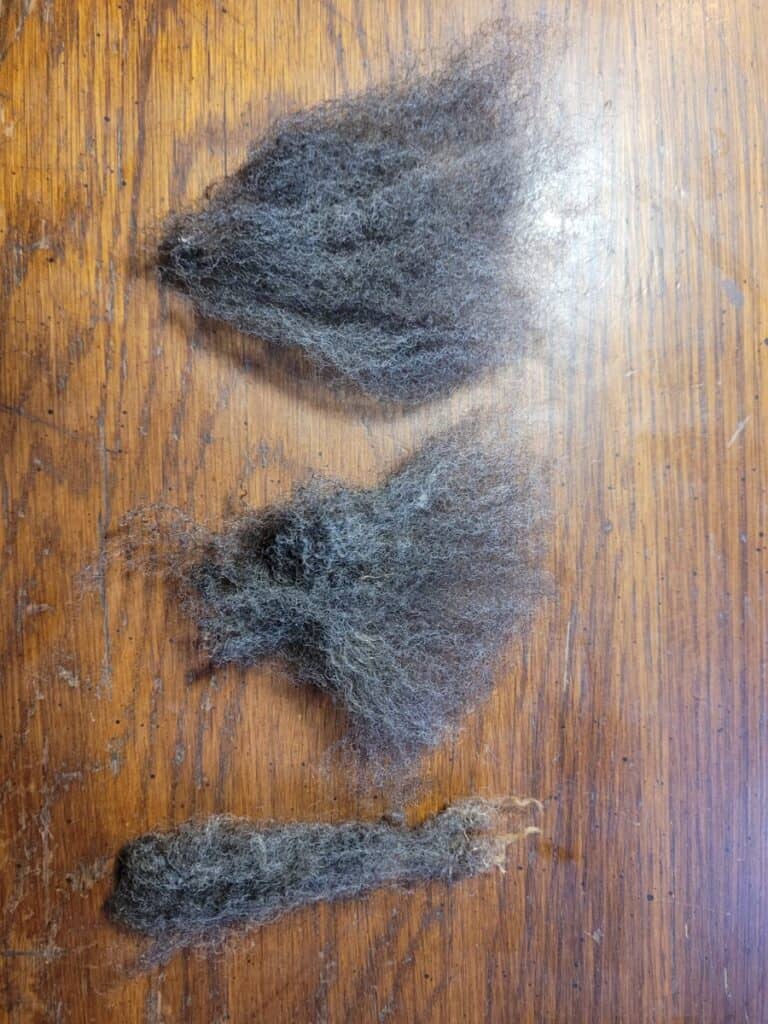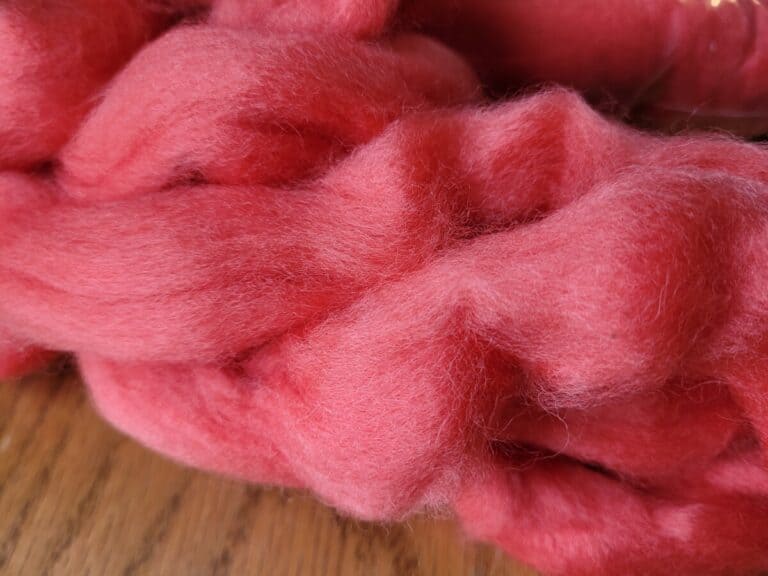3 Tips For Using Carded Wool For Handspinning Yarn
How do you match your carding to the wool you have and to your spinning? Let’s talk about your carding options and which one will suit you and your current project best.
To use carded wool for handspinning you need to:
- match the carding to your fiber and planned yarn
- put together your batt so that you have the fibers you need where you need them
- know that you have various options of spinning from that batt
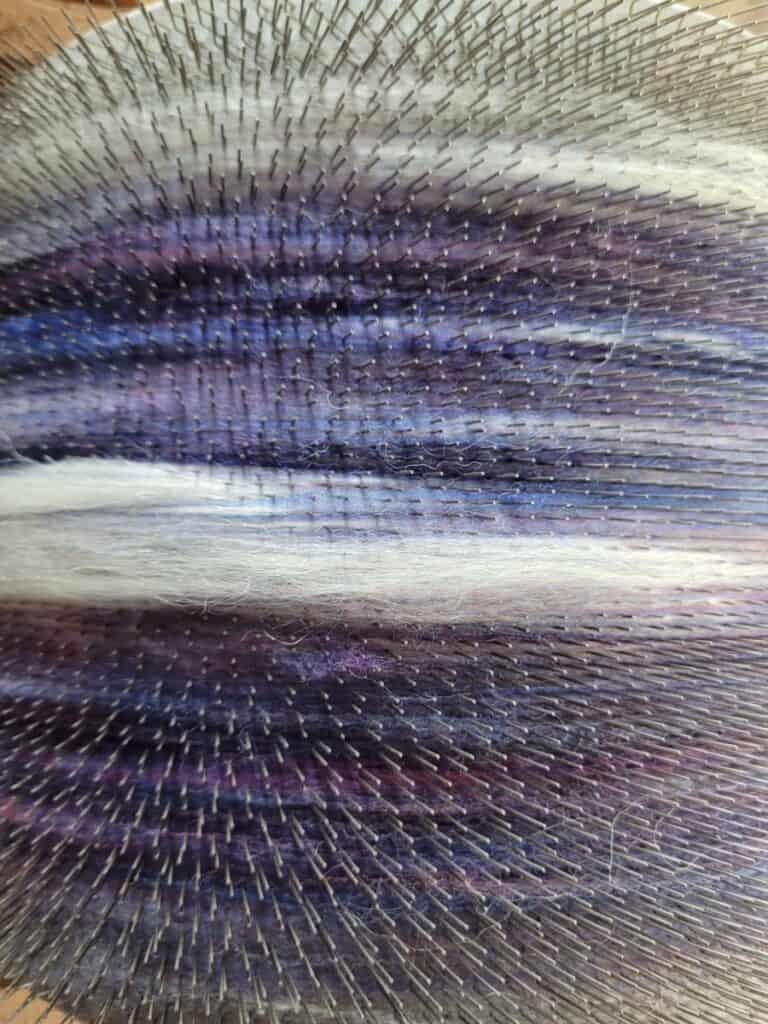
Match your carding to your spinning needs
First off, you need to determine if your carding method will match your spinning needs. While all carders card wool, the results are not the same!
Matching the carder to your needs will give you a better chance at spinning the yarn your are hoping for.
Preparing Your Wool For Carding (Flick, hand or drum carders) shows you how to go from raw fleece to choosing the carder that will best suit your project.
3 types of carders, all different results
There are three ways to card wool for handspinnng: flick carder, hand carders and drum carder. All will give you a little bit different of a result and are ideal for different types of fleeces.
Flick carded wool is the least separated
A flick carder is ideal for wool that needs a slight amount of separation in the end of the lock for you to start spinning.
10 Tips For Using Your Flick Carder will give you some guidance on how and when to use your flicker.
If you need lots of carding for the wool, go with a different carder. Flick carders will not handle VM (vegetable matter) well, the debris will remain in the wool.
Using a flick carder to open up the locks of wool gives you the ability to separate out the fibers on the end of the lock, so you can spin them.
A flick carder does not separate out the entire lock to the extent that the other carders do.
A flick carded lock still keeps some of it’s lock structure and, at least when I have used mine, does not produce the completely fluffed wool that the hand or drum carders will.
Of the three carders, the flick carder is doing the least carding, which is sometimes exactly what you are looking for.
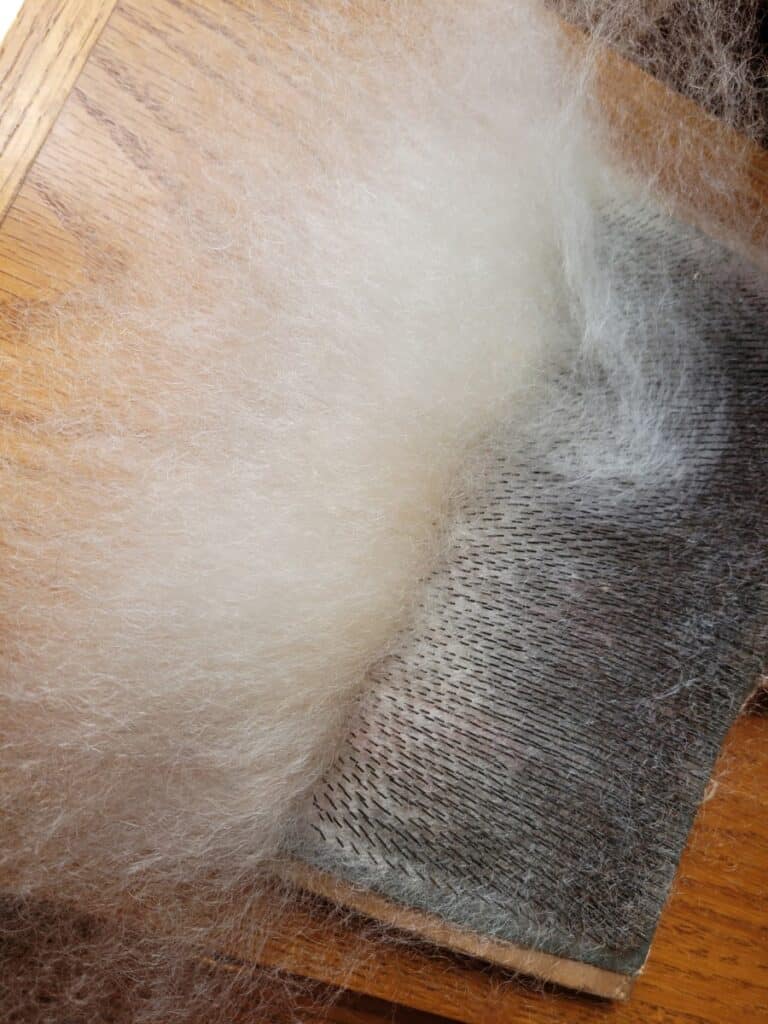
Hand carders are thorough, but small
Hand carders will give you a very thoroughly carded small batt, if you use them properly!
Pros And Cons Of Drum Carding vs. Hand carding goes over the reasons why you would choose one carder over the other based on the fiber you are working with and plans for your yarn.
This means putting a small amount of wool on the card and taking your time to make sure it is completely carded.
I struggle with this part, I tend to rush through carding rather than take my time. If you are carding for color using ready to spin fiber, carding is quick.
If you are doing the first carding of the wool from a fleece you just washed, go slowly and take your time, especially if you want to make a fine or smooth yarn!
Hand carders make a mini batt that can have different colors, fibers or be well blended.
The only thing that hand carders do not do well is textured batts, this is more of a blending board or drum carder task.
To me, hand carders are the most thorough, but they are also small batch only.
You can pull roving off of the card, just like you can from a drum carder, but, of course, since this batt is smaller, your roving will be shorter.
How To Use Hand Carders is a quick read on MotherOfPurl.net with quite a few pictures if you want to see hand cards in action.
Interestingly enough, she is carding a longer staple length wool, which is not something you’d normally see done with hand cards. If you are working with longer fibers, it’s worth a look.
Drum carders have volume
Drum carders are used to card a volume of wool. Drum carders can card wool that has been washed, dyed or straight off the sheep, as long as it is reasonably clean.
Drum carders will not remove the nepps from your wool. If you do not want the nepps to stay in the batt, consider combing the wool, as well.
For me, the best part about a drum carder is that I can put together most any combination of fibers and have quite a few options on how to use the batt.
You can pull roving off of a drum carder or doff (remove) the entire batt and spin from it as a whole or in pieces sectioned off in a variety of ways.
I love my drum carder, if you think you may want one, I heavily encourage you to look into buying one.
It revolutionized my spinning, no joke! Plus, I love to mess around with color and drum carders are wonderful for that! Choose A Drum Carder is for you, read on!
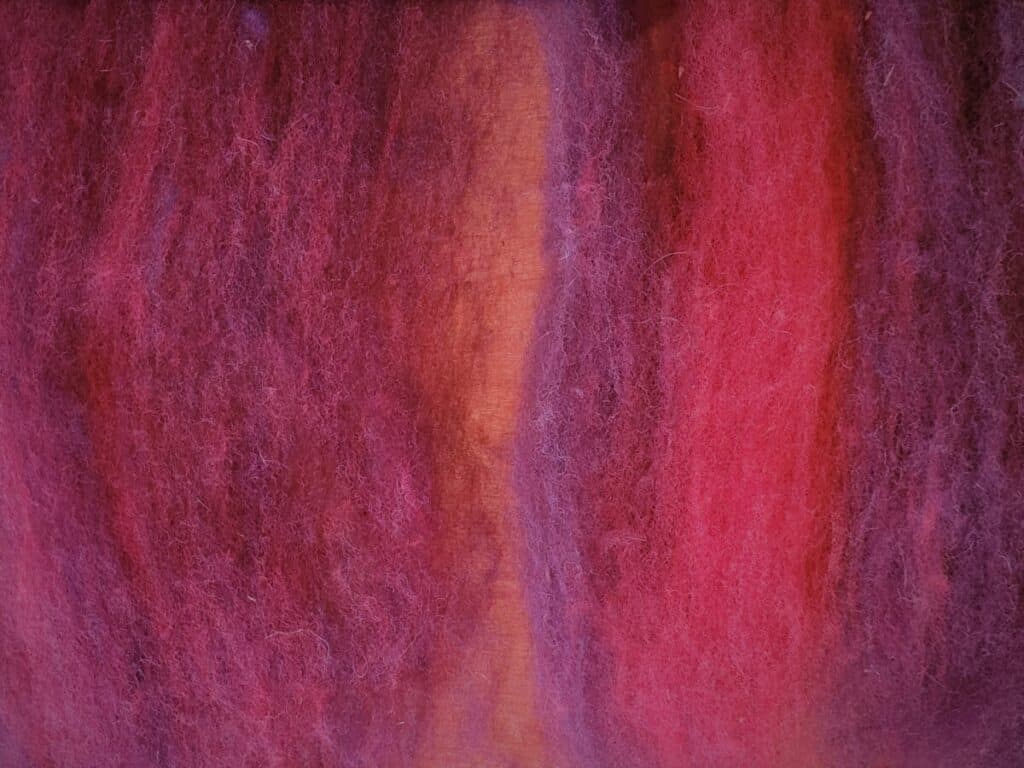
How you card the batt matters to your spinning
How you decide to card the batt will affect the spinning you are able to do from that batt.
Here are a few of the factors to consider when carding:
- the wool or other fibers you use
- the carder you choose
- the arrangement of the fibers in the batt
- the colors of the fibers in the batt
All of these factors together combine to give you the options you have for what you can spin from the batt you carded.
The interesting part here is that small changes in carding, like using a different carder or fiber, can make pretty big changes in the resulting yarn you spin. Talk about customization!
4 ways to spin from batt
There are multiple ways to spin from a batt of wool, the approach you choose will depend upon how you want to spin the colors (if there are colored sections) and how much fiber you like to work with at a time.
Spin from the whole batt
You can spin from the batt as a whole. Just start at the corner and keep working across the fibers. If you are comfortable with handling this much wool at a time, keeping the batt whole works just fine.
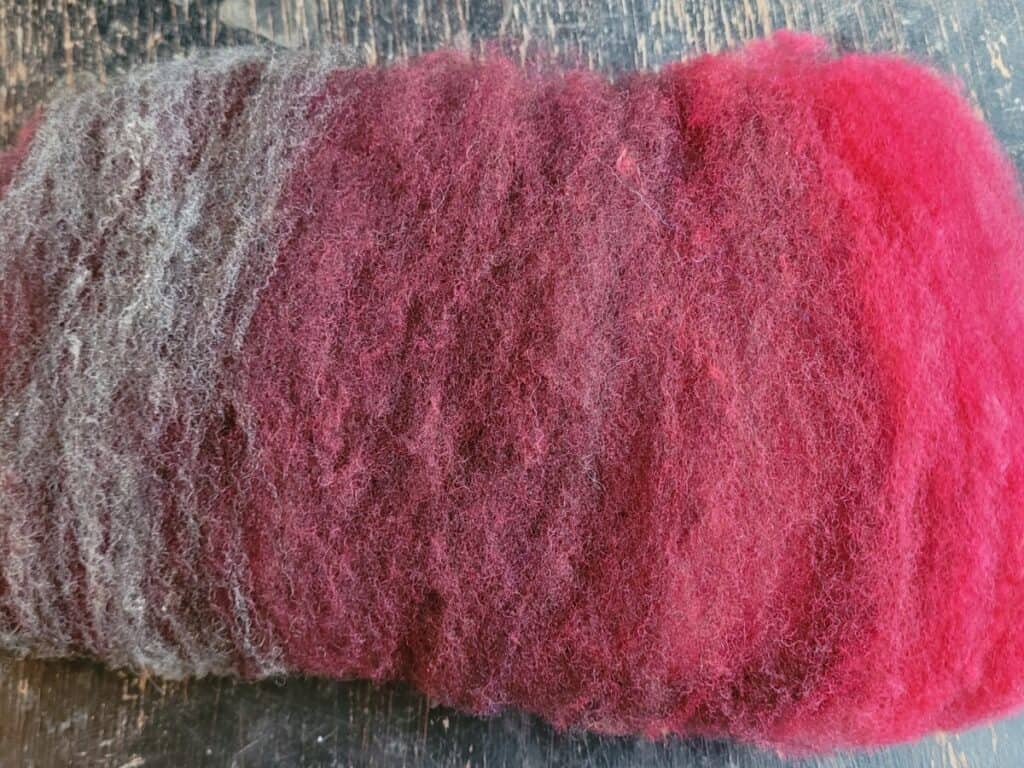
Spin from a section
You can spin from a section of the batt, by section I mean tear off a chunk of the batt and get to spinning!
This is the method I use if the batt is all one wool, so I am not trying to do something specific with colors or to make sure to keep a reasonable blend of fibers in the yarn. I can just spin.
Usually, I’ll take off a section from the main batt, then thin it out a bit by pulling it more from a chunk to a rectangle, then start spinning from a corner.
You don’t need to lengthen out the chunk, that’s just what works for me.
Split the batt
You can split the batt, which is my favorite method of spinning carded wool! I normally split the batt in half lengthwise, then again if I need to.
It depends upon the wool and the thoroughness of my carding.
I also tend to take sections off of each split, so that I am working with a foot to a foot and a half long section of wool at a time.
This is the length that works best for me, do whatever works best for you.
I’d rather join on another short split section than work around a longer piece of roving.
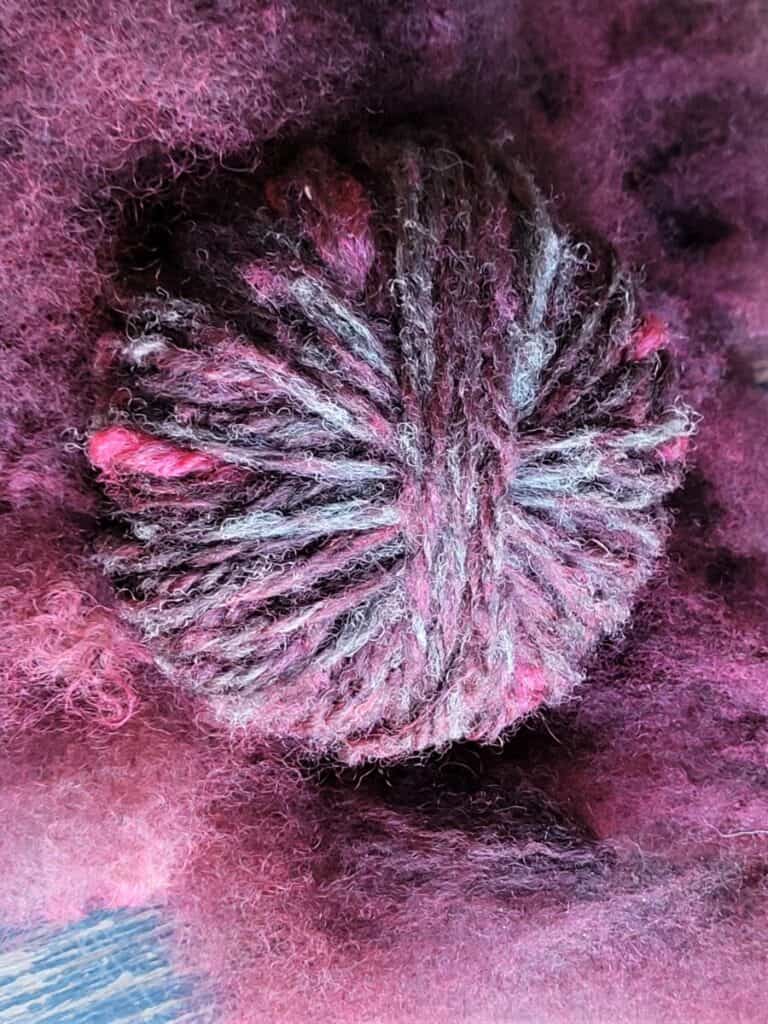
Spin by color
The fourth way you can approach spinning a carded wool batt is to spin by color. This will involve taking sections of the batt onto the wheel according to the colors you want in the yarn.
I have found that putting lots of color changes in a shorter length of yarn gives you more of a color confetti look to the yarn, while keeping the colored sections more separate gives you more of a color blocked yarn.
If I want lots of color mixing, I’ll just work with the batt to get the most colors in to my spinning as I can.
If I want blocks of color, I’ll split the batt into colored sections and spin one section at a time.
Do you have to card wool to spin it?
You do not have to card wool before you spin it, as long as the wool is easy to work with and you can separate out the fibers enough to spin the thickness of yarn you want.
This means that it is more likely that you’ll need to card the wool to spin a thinner yarn than you will need to card the wool to spin a medium yarn.
So, you have to always card to spin a thin yarn? Nope, it depends upon the fleece!
In my experience, it is more likely that you’ll need to card the wool if you want to spin a smaller gauge yarn, but that is not an absolute.
For an example, I have recently purchased a CVM fleece and it is tough to card and keep it from making noils, since the fibers are so fine and springy. This is wonderful wool!
It goes much better on combs or flick carded and spun from the locks. To be fair, my cards are a medium t.p.i. so maybe with fine wool cards this would work just fine, but for now, combing or lock spinning it is.
If you have a fleece that you think you can spin without carding, give it a shot and see what you can do. If it goes well, super!
If not, consider flick carding, if you need just a touch of carding or hand or drum card if you really want to fluff up the fibers.
Really, whether you card or not is all about you and how you like to prepare wool for spinning.

